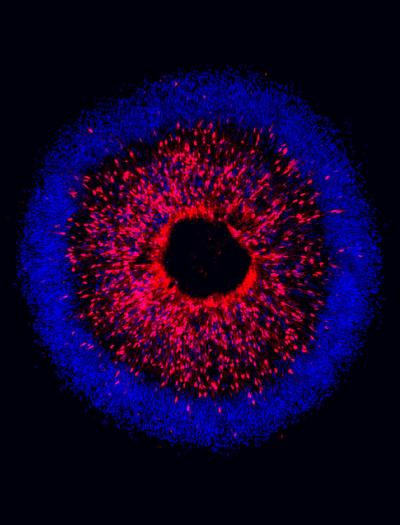
Image credit: IU School of Medicine
More than 3 million Americans have glaucoma, a serious eye condition causing vision loss. Using human stem cell models, researchers at Indiana University School of Medicine found they could analyze deficits within cells damaged by glaucoma, with the potential to use this information to develop new strategies to slow the disease process.
The study focused on targeting genetic mutations within retinal ganglion cells, which serve as the connection between the eye and the brain. Researchers found that when differentiating pluripotent human stem cells into retinal ganglion cells, they were able to identify characteristics associated with neurodegeneration in glaucoma.